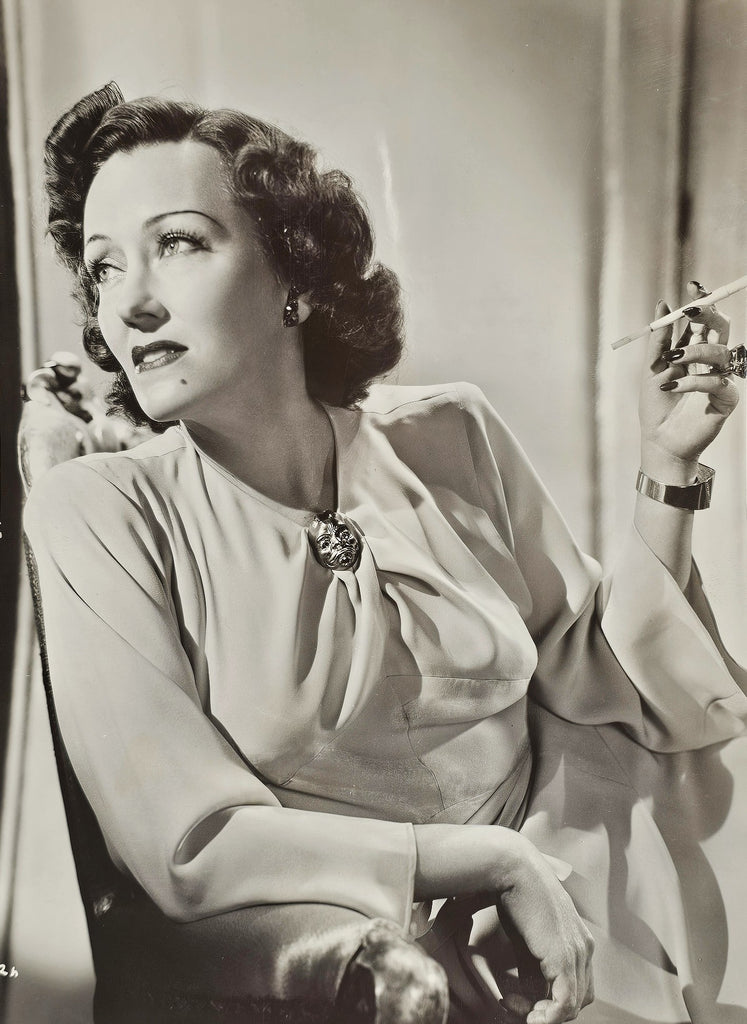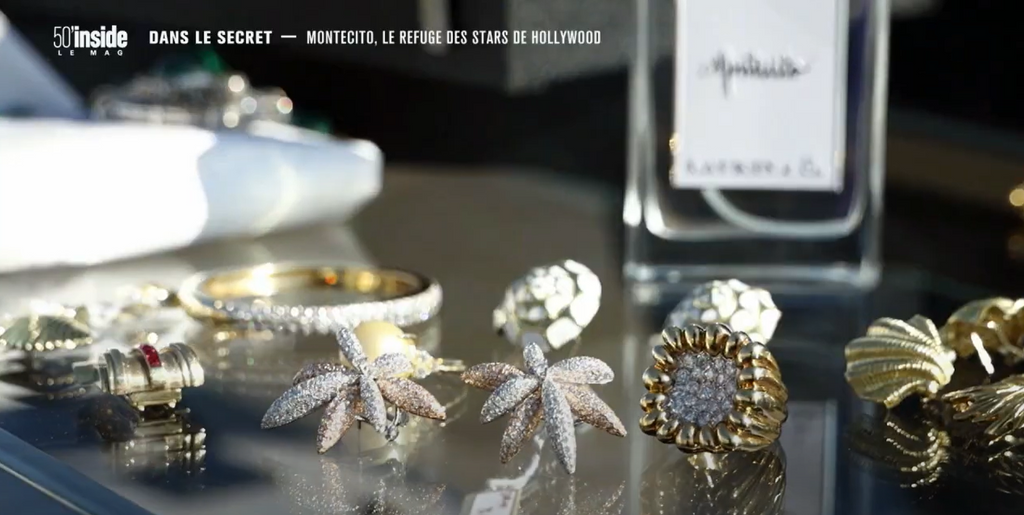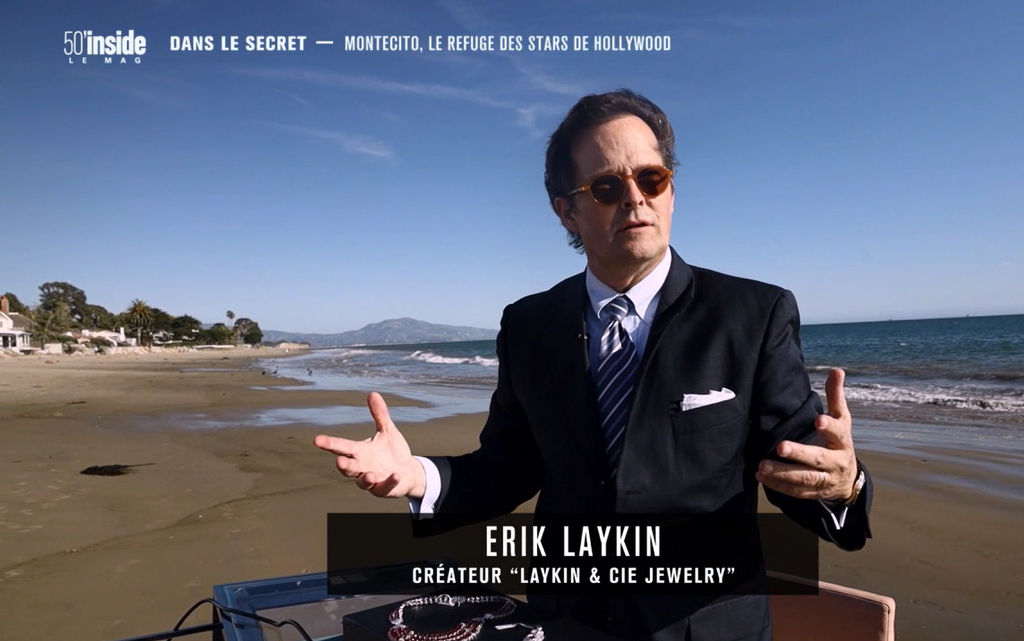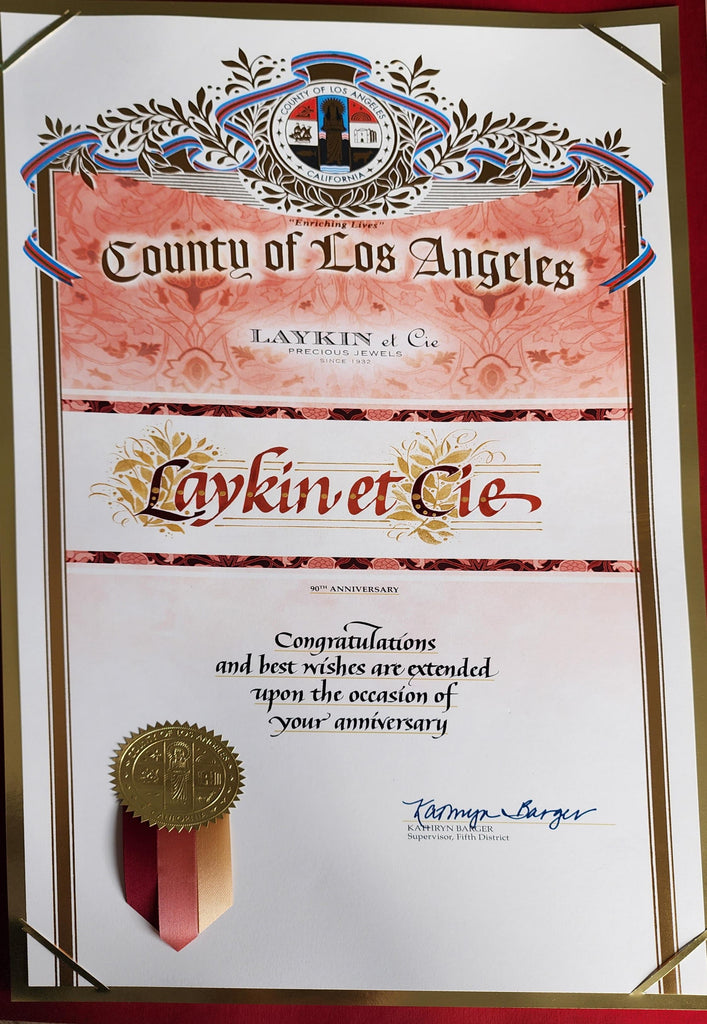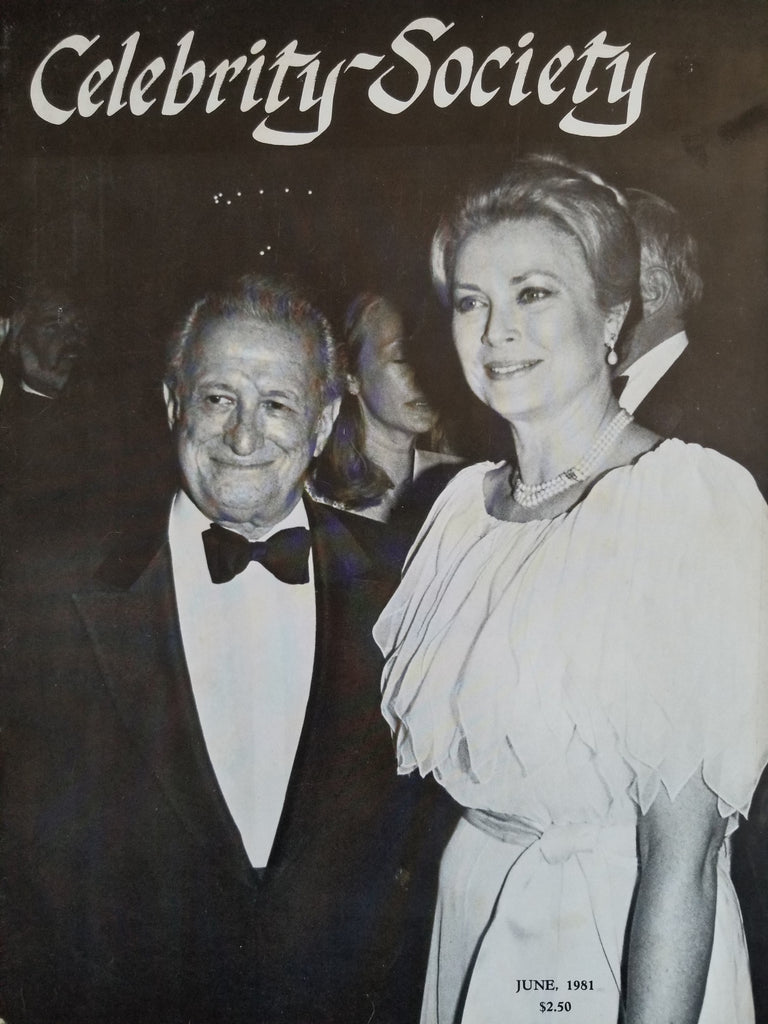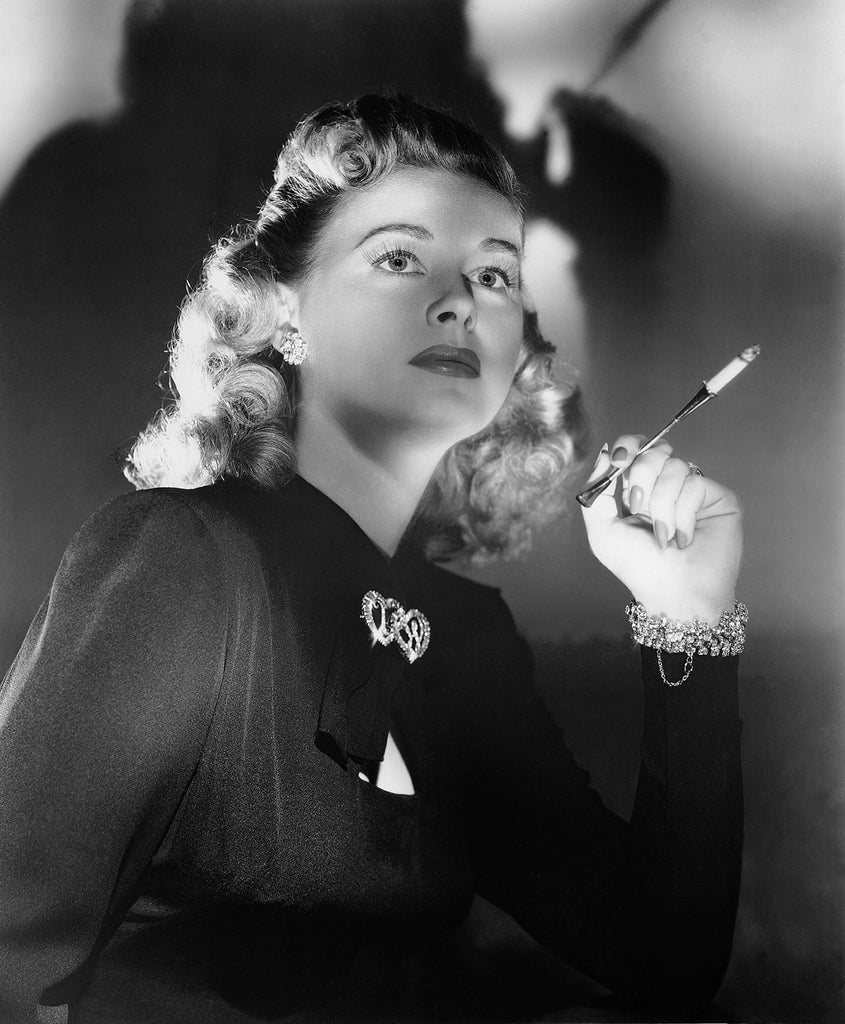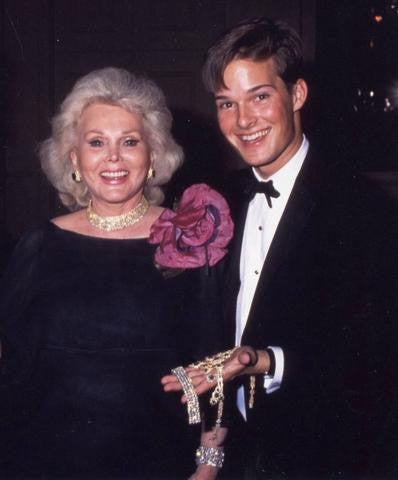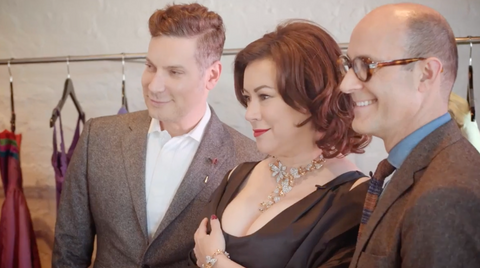Original interview posted in the Hollywood Reporter - Story by Booth Moore.
Jennifer Tilly wearing 18 Karat Gold, Platinum and Diamond Necklace and Bracelet, Designed by George Headley, Los Angeles, the Necklace Retailed by Paul Flato, the Bracelet Retailed by Laykin et Cie.
In advance of Sotheby's Magnificent Jewels Auction, the actress tells THR about her Joan Crawford charm bracelet, Elizabeth Taylor brooch and more.
Jennifer Tilly is an actress (Bullets Over Broadway, Bound), a world championship poker player, and a jewelry collector extraordinaire. Plus, she's just an all-around funny gal, the kind who will freely admit to doing a movie so bad, she's never watched it, just to be able to splurge on an auction lot of David Webb sparklers.
So when auction house Sotheby's wanted to generate some excitement around its forthcoming Magnificent Jewels auction happening Dec. 8 in New York City, which will feature treasures by Van Cleef & Arpels, JAR, Cartier, Tiffany and David Webb, it was a no-brainer to enlist Tilly to preview some of the prized pieces. She did so with the help of Frank Everett, senior vp of Sotheby's Jewelry Department, and vintage guru Cameron Silver, in this video shot at the L.A. boutique Decades.
THR also caught up with Tilly to chat about her approach to collecting, her favorite pieces and what she's got her eye on next.
What's your approach to fine jewelry collecting, as in, how do you evaluate what to buy?
I like kitschy pieces from the '60s and '70s — jewelry that looks like your great aunt in Palm Beach died and gave it to you. Really chic, crazy color combos, and great conversation pieces by Boivin, Suzanne Belperron or Paul Flato, things that are pieces of art, not just really big diamonds. I also like when jewelry has provenance; I have a charm bracelet that used to belong to Joan Crawford and has charms from all her lovers with inscriptions and dates. There's even a miniature replica of an Oscar statuette on it. Ann Marie Stanton, the antique jewelry dealer in Beverly Hills, found it for me.
As an actress, do you feel strongly about wearing jewelry that you bought rather than borrowed?
When I started going down the red carpet, I was a girl on a budget, and I felt like an ad with price tags on it. I felt it was my responsibility to say, "This purse is by so and so" and "This shoe is by so and so." When I became a movie star — and I use that term loosely — that was right when the fashion industry discovered it could sell things off actresses. I'll never forget going to the Oscars and seeing Joan Rivers accost Tyra Banks to ask who made her beautiful necklace. Tyra said, "Mine!" and kept sashaying down the carpet. I thought how amazing to go down the red carpet and say, "Mine!" Then you don't have the bodyguards following you around and making you feel like Cinderella, divesting you of your splendor at the end of the night before you even get into the limo.
Is there a piece in your collection that you're particularly sentimental about?
The cheapest one: my gold World Series of Poker bracelet that I won in 2005, because it represents an accomplishment and a culmination of a dream. Another one is a piece that belonged to Elizabeth Taylor. I always wanted a piece of jewelry from her Cleopatra period because I'd read about how she used to hang out on Via Veneto in Rome and go into the Bulgari store, where they'd open vats of jewels. That was when she was falling in love with Richard Burton, so I wanted something from that period. But when I went to the auction, everything Bulgari was going through the roof, and I found out later that Bulgari had bought almost all the pieces for its archive.
The piece I ended up getting was one that Eddie Fisher got her to try to win her back. It's a brooch that has yellow and white diamonds. When they split up, she paid off the bill for the brooch, which was amazing because she never paid for her own jewelry. So I figured she must have really loved this brooch! Another piece I really like is a minaudiere from Cartier in its original box that belonged to the Duchess of Windsor and has her coat of arms on one side and the Duke of Windsor's coat of arms on the other. It still has the powder and powder puff that belonged to her, so when you open it, you can smell what the Duchess of Windsor smelled like.
Any tips for would-be collectors?
If you have a good eye, you can collect on any level. When I first started, I bought a lot of David Webb, before it got popular again. I actually did a horrible movie to pay for my David Webb bill — I won't tell you the name of the film; I never even saw it. I bought a whole auction lot of David Webb for $35,000. One of the bracelets alone was worth twice as much as the lot, and I've since sold a few of those pieces for a lot of money. Sometimes I sell pieces to buy other pieces.
When I first started, I didn't know much about what constituted a fine stone. I would buy signed pieces. I'd figure Cartier and Bulgari wouldn't use inferior stones. But I didn't understand counterfeiting. There is some shadiness in the jewelry business. Even if you go to the big jewelry shows, you don't know what you're getting. Something will be stamped Cartier or Van Cleef but will have new elements. I'd recommend buying from auction houses, where pieces are vetted. If they say they are Cartier and it's not, they will give you your money back. You also get better deals because you're bidding against dealers. I have a lot of friends who buy jewelry, and they go to Barneys. It's better not to buy things retail.
Anything you collect that's contemporary?
I go to the Dolce & Gabbana Alta Moda couture shows in Italy, and every time you just want to buy a souvenir from the beautiful experience. I buy jewelry from them because either you can buy a dress that you wear maybe once, or you can buy jewelry that's incredibly artistic and one-of-a-kind. Alta Moda is really the designers' baby; it's how they express themselves creatively.
Do you have any tips on how to wear fine jewelry? Do you reserve it for special occasions, for example?
No. Every day I have jewelry on, it makes me really happy. You can wear long chains with jeans or funky vintage dresses. I also design jewelry but just for myself. I was obsessed with eyes, and I designed a queen of hearts ring. A lot of people who love jewelry start designing.
Any collectible piece you have your eye on?
The piece I have my eye on is a necklace that used to belong to Norma Shearer. (Lot 188, pictured above.) I'm a big collector of Paul Flato, and this one is from his heyday, when he was making jewelry for all the movie stars. Shearer was famous for wearing her own jewelry, and when she was in the film The Women, all the actresses wore their own jewelry. They took pride in it. If you had real jewels, big pieces, it showed how much of a movie star you were.
Continue reading

